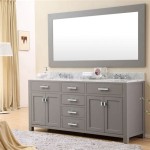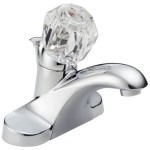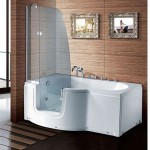How to Ventilate a Bathroom Without a Fan
Bathrooms are prone to moisture buildup due to showers, baths, and general humidity. This moisture can create a breeding ground for mold and mildew, leading to unpleasant odors, health problems, and damage to your bathroom's surfaces. While bathroom exhaust fans are the most common solution for ventilation, there are other effective methods to remove moisture and improve air quality. This article will explore alternative ventilation methods for bathrooms without fans, emphasizing natural ventilation, dehumidifiers, and proper bathroom practices.
Natural Ventilation
Natural ventilation leverages the power of air movement to circulate fresh air and remove moisture. This method relies on opening windows and doors to allow air to flow through the bathroom. The effectiveness of natural ventilation depends on various factors, including the size and layout of the bathroom, the availability of windows, and the prevailing weather conditions. Here are some tips for maximizing natural ventilation:
1. **Maximize Window Openings:** Open windows as wide as possible to create a draft. If the bathroom has multiple windows, open them on opposite sides for optimal airflow. Consider using window screens to prevent insects from entering. 2. **Create Cross Ventilation:** If possible, create cross ventilation by opening windows and doors on opposite sides of the bathroom. This maximizes airflow through the space, promoting faster drying and reducing moisture buildup. 3. **Utilize Doors:** If you cannot open windows, try opening the bathroom door to allow air to circulate from other areas of the house. 4. **Consider Ceiling Vents:** Some bathrooms have ceiling vents that can be opened to allow air to escape upwards. These vents are often part of the building's HVAC system and can enhance natural ventilation. 5. **Timing is Key:** Natural ventilation is most effective when the outside air is cooler and drier than the air inside the bathroom. This typically occurs during the cooler months of the year. 6. **Use a Fan for Extra Assistance:** If you can't achieve sufficient ventilation through natural means alone, consider using a portable fan to circulate air and speed up the drying process. 7. **Avoid Overheating:** Ensure the bathroom doesn't get too hot, especially when using natural ventilation. Heat can contribute to moisture buildup, hindering ventilation effectiveness.
Dehumidifiers
Dehumidifiers are appliances designed to extract moisture from the air, effectively lowering the humidity levels in a room. They are particularly useful in bathrooms where natural ventilation is limited or insufficient. Here are some key considerations for using dehumidifiers in bathrooms:
1. **Types of Dehumidifiers:** Dehumidifiers come in various sizes and technologies. Choose a model that is appropriate for the size of your bathroom. Consider the features and energy consumption of different models before making a purchase. 2. **Placement and Operation:** Place the dehumidifier in a central location within the bathroom, ensuring adequate airflow around it. Run the dehumidifier during and after showering or bathing to remove excess moisture. 3. **Emptying and Maintenance:** Regularly empty the dehumidifier's water collection tank to prevent overflow and maintain its efficiency. Clean the dehumidifier's filter periodically to ensure optimal performance. 4. **Energy Efficiency:** Dehumidifiers consume electricity, so consider their energy efficiency when making a purchase. Opt for models with a low wattage or an energy-saving mode to minimize energy consumption.
Bathroom Practices
Besides ventilation methods, adopting proper bathroom practices can significantly reduce moisture buildup and improve air quality. Here are some tips for creating a drier and healthier bathroom environment:
1. **Minimize Shower Time:** Shorter showers and baths minimize the amount of steam and moisture released into the air. 2. **Use a Shower Curtain:** A shower curtain helps prevent water from escaping the shower area, reducing overall humidity in the bathroom. 3. **Wipe Down Surfaces:** After showering or bathing, towel-dry the bathroom surfaces and the shower floor to prevent water from accumulating. 4. **Use a Floor Mat:** Place a floor mat outside the shower to absorb dripping water and prevent water tracking throughout the bathroom. 5. **Ventilate During the Day:** Open windows and doors for short periods during the day to allow fresh air to circulate and remove residual moisture. 6. **Control Temperature:** Avoid excessive heating in the bathroom, as heat increases moisture content in the air. 7. **Clean Regularly:** Regularly clean the bathroom, including the shower floor, walls, and grout, to remove mold and mildew spores. This will help prevent their growth and improve air quality.
By implementing these ventilation strategies and adopting proper bathroom practices, you can effectively reduce moisture buildup, create a healthier environment, and prevent mold and mildew growth in your bathroom, even without a fan.

How To Vent A Bathroom With No Outside Access

No Exhaust Fan In The Bathroom Here Are Alternatives Decorrect

How To Ventilate A Bathroom Without Windows

4 Simple Ways To Vent A Bathroom With No Outside Access Wikihow

Dehumidifying A Bathroom Without Fan Diy Guide Hunker

No Exhaust Fan In The Bathroom Here Are Alternatives Decorrect

No Bathroom Window Problem 6 Tricks To Keep Your Room Fresh Homify

No Exhaust Fan In The Bathroom Here Are Alternatives Decorrect

Does Your Bathroom Need An Exhaust Fan Mr Rooter

How To Brighten Up A Bathroom Without Windows By Mira Showers
Related Posts







